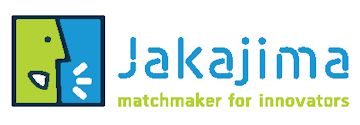Dairy ingredients such as milk proteins have structure-forming capabilities and are, therefore, suitable ingredients for 3D food printing. In the cheese-making process, during the curdling step, milk proteins coagulate and form a gel (curd) produced by the action of rennet (a substance typically found in a calf’s stomach). The consistency and coagulation speed of the milk curd can be controlled by factors such as protein content, pH, salt concentration and temperature.
The topic of the proposed presentation will show a potential method for 3D printing dairy snacks, based on optimising and controlling rennet-induced gelation of protein-fortified milk. It will present the development of a printable dairy formulation by evaluating the effect of pH, ionic calcium content and temperature on the rennet gelation properties of protein-fortified milk. It will also demonstrate how rennet gelation was adapted to produce dairy structures using the printable dairy formulation with a syringe-based 3D printer equipped with a temperature-controlled platform.
A presentation by Ricardo Uribe Alvarez, PhD candidate at Teagasc, Ireland.
View of the Speaker
Question 1: What drives you?
Learning and understanding how things work.
Question 2: Why should the delegate attend your session?
This presentation will demonstrate how the curdling step of the cheese-making process can be potentially adapted to the 3D printing process to create new dairy products potentially.
Question 3: What emerging technologies / trends do you see as having the greatest potential in the short and long run?
There is significant research in developing suitable food products from different sources for 3D printing. In the future, some of these 3D-printed foods might be used for studies in other research areas.
Question 4: What kind of impact do you expect them to have?
Expand the knowledge of foods’ physiochemical and mechanical properties to design products with desired textural characteristics. Moreover, 3D food printing could become an essential tool for achieving individually tailored nutrition.
Question 5: What are the barriers that might stand in the way?
Accessibility to 3D food printers and consumer perception of this novel technology.
About Ricardo Uribe Alvarez
Ricardo graduated in Food processing engineering (2013) from Instituto Tecnológico y de Estudios Superiores de Occidente (Mexico). Following his undergraduate degree, he worked in the food supplement industry in research and development, developing different products launched in the Latin-American and USA market.
He obtained a master’s degree (2017) in food technology from KU Leuven and Ghent University (Belgium). Currently, he is a PhD candidate at Teagasc and Munster Technological University (Ireland). His PhD research focuses on developing dairy-based formulations that can be adopted for 3D food printing.
About Teagasc
Teagasc – the Agriculture and Food Development Authority – is the national body providing integrated research, advisory and training services to the agriculture and food industry and rural communities.
Ricardo Uribe Alvarez is speaker at the 2022 edition of the 3D Food Printing Conference, part of the Agrifood Innovation Event.
